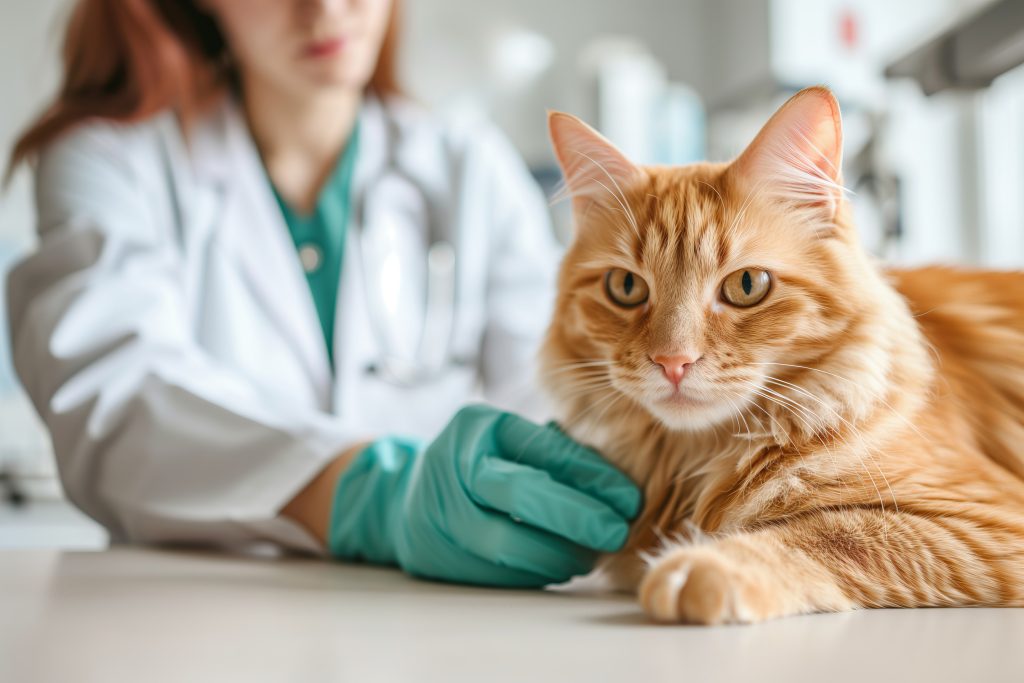
Cats have a reputation for independence, sometimes bordering on aloofness. While some felines are cuddly lap cats, others seem utterly indifferent to their human companions. If your cat consistently shows little interest in interacting with you, it can feel confusing or even hurtful. However, this behavior often has understandable reasons rooted in personality, environment, health, or even your own approach. Understanding potential causes can help you adjust expectations or make changes to potentially improve your bond. Here are twelve possible reasons your cat seems uninterested.
1. It’s Simply Their Independent Personality or Breed Trait
Just like people, cats have diverse personalities. Some are naturally more solitary, independent, or less demonstrative with affection than others. Certain breeds are also known for being more reserved (e.g., Russian Blue) compared to notoriously affectionate breeds (e.g., Ragdoll, Siamese). Your cat’s apparent lack of interest might simply reflect their inherent temperament. They may show affection subtly (like slow blinks or simply being nearby) rather than through overt cuddling or seeking attention. Respecting their individual personality is key.
2. Insufficient or Improper Socialization When Young
The critical socialization period for kittens is typically between 2 and 7 weeks of age. Positive handling and interaction with humans during this window significantly shape their future comfort and sociability with people. Kittens who had minimal human contact or negative experiences during this crucial time may grow into more fearful, skittish, or less affectionate adult cats. Their lack of interest might stem from underdeveloped social skills or lingering fear, not a dislike of you specifically.
3. Negative Past Experiences or Trauma
If you adopted your cat as an adult, their history is often unknown. They might have experienced neglect, abuse, or abandonment in a previous home, leading to lasting fear or distrust of humans. Even specific negative incidents (like rough handling or a scary vet visit) can create lasting wariness. Building trust with a previously traumatized cat takes significant time, patience, and consistently positive, gentle interactions. Their apparent disinterest might be a defense mechanism rooted in past pain.
4. Feeling Stressed, Anxious, or Fearful
Changes in the environment can cause significant stress for cats, leading them to withdraw or hide rather than seek interaction. Common stressors include moving house, new furniture, loud noises (construction, parties), changes in household routine, or the presence of unfamiliar people or animals. An anxious or fearful cat prioritizes feeling safe over socializing. Identifying and mitigating sources of stress in their environment might help them feel secure enough to show more interest in connecting with you.
5. Underlying Medical Issues or Physical Pain

A sudden change in behavior, including increased withdrawal or lack of interest, can signal an underlying health problem. Cats are masters at hiding pain or illness. Conditions like dental disease, arthritis, kidney disease, or hyperthyroidism can cause discomfort or lethargy, reducing their desire to interact. If your previously sociable cat becomes aloof, a veterinary check-up is essential to rule out or address any medical causes contributing to their behavioral shift. Pain makes interaction difficult.
6. Normal Changes Associated with Senior Cats
As cats age, their energy levels naturally decrease. Senior cats (typically over 10-12 years old) may sleep more and play less. They might develop sensory decline (hearing or vision loss) making interaction harder. Cognitive dysfunction syndrome (similar to dementia) can also cause behavioral changes, including withdrawal or confusion. While still capable of affection, older cats might express it more quietly or seek less active engagement than they did when younger. Adjusting expectations for senior cat interaction is important.
7. Your Interaction Style Might Be Overwhelming Them
Sometimes, how we approach cats influences their response. Loud voices, sudden movements, forced cuddling, or overly enthusiastic petting can be overwhelming or frightening for many cats. They might learn to avoid you to escape unwanted advances. Approaching calmly, letting the cat initiate interaction (e.g., offering a finger to sniff), using gentle petting, and respecting their signals to stop are crucial. Learning cat body language helps you interact in ways they find pleasant and non-threatening.
8. They Prefer Different, Subtler Forms of Affection
Not all cats express affection through cuddling or vocalization. Your cat might show interest and affection in much subtler ways that you might be overlooking. Slow blinks are often called “cat kisses.” Simply choosing to sit near you, rubbing against your legs briefly, gently head-butting you, or displaying a relaxed posture in your presence can all be signs of trust and affection. Recognizing and appreciating these quieter signals helps you understand their unique way of bonding.
9. Lack of Engaging, Interactive Playtime
Cats, especially indoor cats, need mental and physical stimulation. If their environment is under-stimulating or they lack opportunities for engaging play, they might become lethargic or withdrawn. Regular interactive playtime using toys like feather wands or laser pointers (ending on a physical toy) mimics hunting behavior. This satisfies their instincts, provides exercise, and strengthens the bond between you and your cat. A bored cat might seem uninterested simply because their needs aren’t being met.
10. Changes in Household Routine or Your Schedule
Cats are creatures of habit and can be sensitive to changes in routine. Significant shifts in your work schedule, feeding times, or general household activity levels can cause stress or uncertainty, leading them to withdraw temporarily. If your availability for interaction has changed, the cat might be adjusting. Try to maintain consistency where possible, or re-establish positive interaction routines gradually within the new schedule. Predictability helps cats feel secure.
11. Introduction of New Pets or People
Bringing a new pet (another cat, a dog) or even a new person (roommate, baby, partner) into the home dramatically changes the cat’s environment and social dynamics. Your existing cat might feel threatened, jealous, or stressed by the newcomer, causing them to hide or become less interactive with you as they adjust. Proper, gradual introductions are essential. Providing reassurance and dedicated one-on-one time with your original cat helps them feel secure during the transition period.
12. Simply Their Current Mood or Preference
Sometimes, a cat’s lack of interest is just temporary. Like humans, cats have moods. They might simply feel like being alone, napping, or observing from a distance at that particular moment. Forcing interaction when they aren’t receptive can be counterproductive. Respecting their need for space and trying again later is often the best approach. Understanding that their desire for interaction naturally ebbs and flows is part of living with these independent creatures.
Reasons Beyond Simple Indifference
If your cat seems uninterested, explore potential reasons beyond simple indifference. Consider their personality, background, current environment, health, age, and your own interaction style. Rule out medical issues first. Then, focus on creating a safe, stimulating environment, respecting their boundaries, learning their subtle communication cues, and engaging in positive interactions like playtime.
Building trust and understanding takes patience. Accepting your cat’s unique personality, while ensuring their needs are met, is key to a harmonious relationship, even if they aren’t a traditional lap cat.
Why do you think your cat sometimes seems uninterested? What strategies have you found effective for bonding with a more independent or aloof cat? Share your feline insights below!
Read More:
11 Pets That Are Great For Your Mental Health
7 Dog Breeds That Are Surprisingly Great for ADHD

Latrice is a dedicated professional with a rich background in social work, complemented by an Associate Degree in the field. Her journey has been uniquely shaped by the rewarding experience of being a stay-at-home mom to her two children, aged 13 and 5. This role has not only been a testament to her commitment to family but has also provided her with invaluable life lessons and insights.
As a mother, Latrice has embraced the opportunity to educate her children on essential life skills, with a special focus on financial literacy, the nuances of life, and the importance of inner peace.
